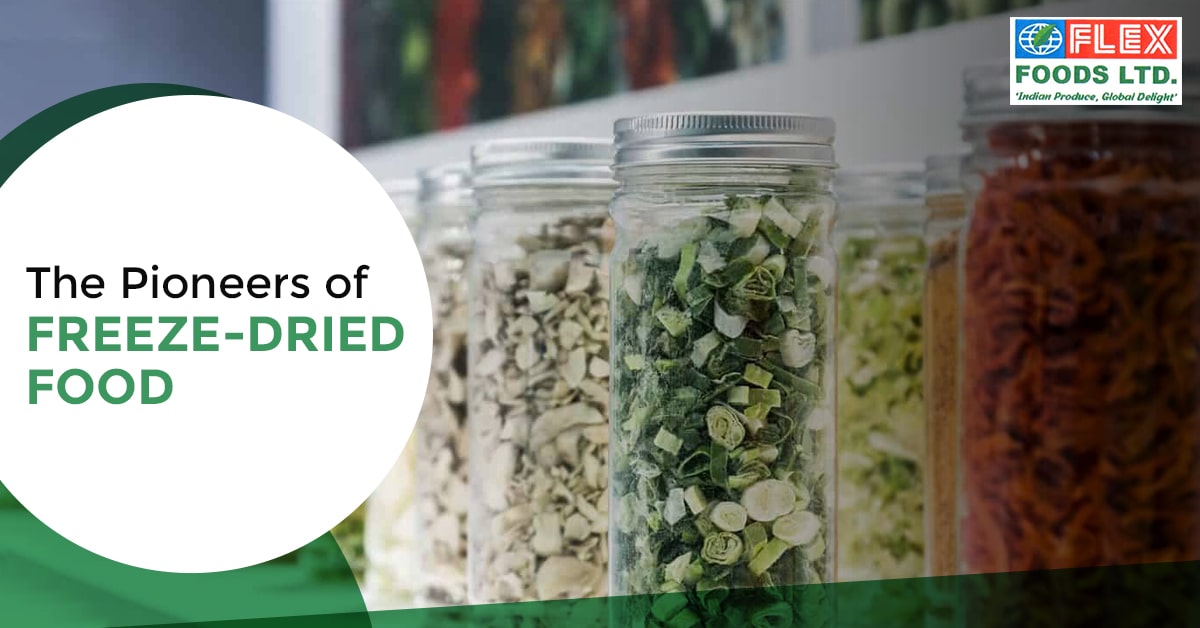Freeze-drying is an advanced food preservation method that removes moisture from food while maintaining its structure and nutritional value. The process involves three main steps: freezing the food, removing the ice through sublimation under vacuum conditions, and finally eliminating residual moisture through secondary drying.
This method offers several advantages over traditional drying techniques, making it particularly suitable for the RTE meal market. For instance, freeze-dried sweet corn retains its vibrant color, shape, and nutritional profile, unlike air-dried or heat-dried alternatives that often shrink and darken. When rehydrated, freeze-dried strawberries closely resemble their fresh counterparts in appearance and taste.
Benefits of Freeze-Dried Foods in the RTE Market
The application of freeze-drying technology in India's RTE market brings numerous benefits. Primarily, it significantly extends the shelf life of food products without requiring refrigeration. This addresses a major challenge in India's diverse climate conditions and sometimes unreliable cold chain infrastructure. Freeze-dried foods can be stored at room temperature for months or even years without spoilage, making them ideal for areas with limited access to refrigeration or during power outages.
Another critical advantage is nutrient retention. Unlike many preservation methods that can degrade vitamins and minerals, freeze-drying maintains most of the food's original nutritional value. This aspect particularly appeals to health-conscious consumers seeking convenient yet nutritious meal options. For example, freeze-dried spinach retains much more of its vitamin content compared to spinach preserved through other methods.
The lightweight and compact nature of freeze-dried foods is another benefit, especially relevant in a country with varied geographical terrains. This characteristic not only reduces transportation costs but also makes these products ideal for emergency rations, outdoor activities, and space- saving storage in urban homes with limited kitchen space. A week's worth of freeze-dried meals can often fit into a small backpack, making them popular among hikers and travelers.
Moreover, the rapid rehydration of freeze-dried foods aligns perfectly with the convenience factor demanded by RTE consumers. For example, a freeze-dried vegetable curry can be reconstituted to its original form and flavor profile within minutes simply by adding hot water. This quick preparation time is invaluable for busy professionals or students who need nutritious meals but lack the time for extensive cooking.
Current State of the RTE Market in India
India's RTE meal market has been growing at an impressive rate, driven by factors such as urbanization, increasing disposable incomes, changing lifestyles, and the rise of nuclear families and single-person households. Within this expanding market, freeze-dried foods are carving out a significant niche.
Various product categories are benefiting from freeze-drying technology. Instant soups and noodles incorporating freeze-dried vegetables offer improved texture and nutrition compared to their dehydrated counterparts. Packaged Indian curries and rice dishes with freeze-dried ingredients provide more authentic flavors and better nutritional profiles. Breakfast cereals and porridges with freeze-dried fruits offer convenience without compromising on taste or nutritional value.
The outdoor and adventure food market is another area where freeze-dried foods are gaining traction. Campers, trekkers, and other outdoor enthusiasts appreciate the lightweight, nutritious, and easy-to-prepare nature of these foods. Emergency food kits, increasingly popular in areas prone to natural disasters, often include freeze-dried meals due to their long shelf life and nutritional completeness.
Future Prospects
As awareness grows and technology advances, the role of freeze-dried foods in India's RTE market is likely to expand. We may see the development of new product categories tailored to specific consumer segments, such as nutritionally balanced freeze-dried meals for health enthusiasts or gourmet freeze-dried ingredients for cooking enthusiasts.
The technology could also significantly reduce food waste, a pressing issue in India. Surplus seasonal produce could be freeze-dried and stored for year-round use, helping to stabilize prices and ensure food security. This could be particularly beneficial for fruits and vegetables that have short harvest seasons but high demand throughout the year.
Furthermore, freeze-dried foods could facilitate the export of authentic Indian flavors to global markets. The ability to preserve complex spice blends and traditional dishes in a shelf-stable, easily transportable form opens up new possibilities for culinary cultural exchange. Indian diaspora communities around the world could benefit from access to authentic, high-quality Indian ingredients and meals.
The healthcare and pharmaceutical sectors may also drive growth in freeze-dried food technology. Freeze-dried fruits for instance, have a longer shelf life and better stability compared to their fresh counterparts. As the awareness of gut health increases in India, we might see a rise in freeze-dried probiotic products.
Advancements in packaging technology could further enhance the appeal of freeze-dried foods. For example, the development of eco-friendly, biodegradable packaging that maintains the low- moisture environment necessary for freeze-dried foods could appeal to environmentally conscious consumers.
As urban farming and local food production gain popularity, small-scale freeze-drying units might become available for home or community use. These units could allow consumers to preserve their own garden produce or take advantage of seasonal abundance in local markets.
Conclusion
Freeze-dried foods are poised to play an increasingly important role in India's growing RTE meal market. By offering a combination of convenience, nutrition, and taste preservation, they address many of the demands of modern Indian consumers. While challenges exist in terms of technology adoption and consumer education, the potential benefits are substantial. The success of freeze-dried food in India will depend on a combination of technological advancement, strategic marketing, and adaptation to local tastes and preferences.

